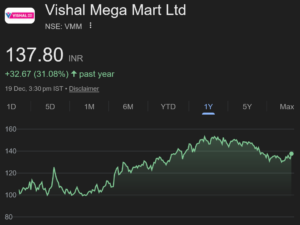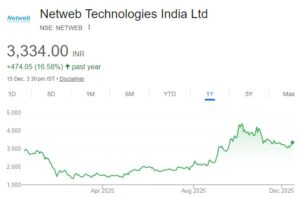The judgement of the Bombay High Court on 15th June in the Anil Ambani’s Reliance Natural Resources (RNRL) dispute against elder brother Mukesh Ambani’s Reliance Industries (RIL) brings to an end the second round of the high-stakes legal battle over a gas supply and pricing agreement.
The Court ruled in favour of RNRL.
The Reliance dispute arose after the Ambani brothers split the group in 2005 following a feud. The feud broke up India’s largest corporation, RIL in 2005-06. The feud began shortly after the death of RIL founder Dhirubhai Ambani in 2002. A MoU dated June 18, 2005 was entered into between the Ambani brothers which set out how the gas supply would be made to RNRL by RIL. The MoU envisaged that RNRL would get 28 million cubic metres of gas per day at the same price set by RIL for NTPC i.e. $2.34 per mmBtu for 17 years.

RIL reneged on the understanding in the MOU on the ground that the price was artificially low and contrary to the formula laid down by the Government. It was also argued that the MOU was entered into by undue influence. It was also argued that the MoU was merely a “family arrangement” and that it was purely in the private domain and did not fall in the corporate domain and as such had no value.
The legal battle between the Ambanis started in 2005 with a company petition filed by RNRL for effective implementation of the Reliance group’s demerger scheme.

In its verdit of 15th June 2009, the Bombay High Court directed the parties to honour the MOU. The Court acknowledged that the MoU strictly speaking did not fall in the corporate domain but still upheld the arguments of RNRL that the brothers were expected to enter into an agreement in consonance with what was in the MoU. It held that the MoU and its contents were binding on both parties – RIL and RNRL. The HC also invoked the doctrine of lifting the corporate veil and held that the MoU was considered when the board meeting of RIL took place to consider the reorganization. It noted that the MoU signed on June 18, 2005 formed the very basis of the scheme of demerger and the reorganization of the undivided RIL group’s businesses.
The court has allowed the brothers to revert to their mother Kokilaben Ambani for help. Under the MOU Kokilaben Ambani had reserved her right to intervene in the dispute between the Ambani brothers.

The result is that RIL and RNRL will have to enter into a ‘suitable arrangement’ within a month so that RNRL gets an assured supply of 28 mmscmd gas from RIL’s Krishna-Godavari (KG) basin at $2.34 per million metric British thermal units (mmBtu) for 17 years for its power plant. RNRL would get gas at the same price set by RIL for NTPC.
The price for RNRL is below the $4.20 per mmBtu set by the government for supplies from the oil field.
Consequences of the verdict on RIL:
The price at which RIL has to sell gas to RNRL is $2.34 per mmBtu. This price is 44.2% lower than the $4.20 per mmBtu that RIL is entitled to recover from third-party power and fertiliser firms under recently-signed agreements. These agreements are as per a government-approved formula. RIL argued in court that the government-approved price should be upheld. However, the court upheld the lower price of $2.34 per mmBtu in terms of the MOU.
The immediate consequence of the verdict is that RIL will suffer financially because it will have to sell at least 35% of its natural gas production, assuming a production level of 80 mmscmd, at lower than the $4.20 rate set by the government. However, the royalty payable to the Government on the said 35% of the total gas produced will have to be paid at the higher rate of $4.20.
It is estimated that RIL’s earnings per share will be reduced to Rs 132 in 2009-10 from an estimated Rs 141. The revenues from the KG-D6 basin (KG Basin is RIL’s main gas field) is projected to fall to Rs 6,100 crore from Rs 8,100 crore while earnings before interest, tax, depreciation and amortisation is likely to slip to Rs 3,100 crore from Rs 5,800 crore.
Consequences of the verdict on the Govt:
There is no immediate adverse impact on the Government. Under the Production sharing agreement, the Government is entitled to receive its share of the production from the KG basin at a gas price of $4.20/mmBtu for five years ending April 2014. The said price is payable to the government irrespective of the fact that the contractor (RIL) sells the gas at a discount. The government is required to renegotiate its profit-share for gas supplies after five years. However, the government’s efforts to put in place a pricing structure for the industry may have received some kind of a setback. In 2007, the government had taken steps to create a formula for fixing natural gas prices and a price of $4.2 per mmBtu was fixed for RIL’s supplies.
Consequences of the verdict on RNRL & Reliance Power:
RNRL & Reliance Power are laughing their way to the bank as they get 28 mmscmd of gas cheap for 17 years. However, the gas cannot be traded and has to be used for power generation. Reliance Power will be able to derive immediate benefits if it could purchase a large gas-fired power plant.
The other option available to Reliance Power is to get its 4,000 MW Shahpur project started as soon as possible. This Plant is located in Maharashtra and is designed to run on both gas and coal. It can go on-stream in 24 months. Reliance Power has another 7400 Mega Watt project at Dadri which will take at least 35 months to be implemented. Though land has been acquired and environmental clearances have been secured, the EPC contracts have not been awarded as yet. Work on these projects had been slow due to uncertainty over gas supply from KG Basin.
Consequences of the verdict on NTPC:
The verdict was prove favourable to NTPC, the government – owned power generation company which is involved in a similar legal dispute with RIL over gas supplies to its Kawas and Gandhar plants. RIL has contracted with NTPC to sell the gas at $2.34 per mmBtu.
Consequences of the verdict on other customers of RIL:
RIL started producing gas from the KG basin in early April and expects to produce up to 40 million metric standard cubic metres per day (mmscmd) of gas by July end and then scale it up to 80 mmscmd by the end of the year. Out of this production, the government has allocated 15 mmscmd for fertiliser companies and 18 mmscmd of natural gas for the power sector.
RIL has signed gas sale agreements with 12 urea manufacturers and a few power utilities in the past two months. All the contracts were signed with the rider that they would be subject to the high court’s final judgment.
The supply by Reliance Industries to Reliance Natural Resources is unlikely to have any adverse impact on the share allotted to the fertiliser firms as the production capacity is sufficient.
TIME-LINE OF THE SAGA
1999: NELP takes off. Govt invites global tenders for exploration in oil and gas fields. RIL and NIKO emerge successful bidder of KGD6
2003: RIL wins an international tender to supply 12 cubic meters of gas to NTPC’s two power projects in Gujarat for 17 years at the price of $ 2.34 per MMBTU.
Apr 12, ’04: Production sharing contract (PSC) executed among govt, RIL and NIKO
June 18, ’05: MoU signed between RIL promoters family members. Anil Ambani resigns as RIL JMD. Reorganisation of business begins
Dec 9, ’05: HC approves the RIL demerger scheme. Gas, coal, telecom and fin services businesses go to Anil and Mukesh retains others
Nov 8, ’06: RNRL files company application taking dispute with RIL over gas supply to court
May 3, ’07: Company judge restrains RIL from creating third party rights in gas meant for RNRL
Oct 10, ’07: Govt approves market price determined by RIL at above $4.20 mmBtu
Oct 15, ’07: Company Judge upholds RNRL’s case, says MOU between parties binding. Directs them to renegotiate GSMA instead of directing a modification of the Scheme
Dec ’07: RIL and RNRL file separate appeals against Oct 15 judgment. RNRL said court did not give directions for amendment of gas supply agreement in order to make the scheme workable. Interim order against RIL continues
Jan 30, ’09: Mumbai HC concludes hearing. Passes Interim order lifting stay on sale of gas from KGD6
June 15, ’09: HC asks both sides to honour 2005 MoU and arrive at a fresh ‘bankable agreement’ within a month to ensure RNRL gets 28 mmscmd gas from RIL, but till then continues Jan 30 interim order





